Diaporthe pimpinellae Abeywickrama, Camporesi, Dissanayake & K.D. Hyde, sp. nov.
Index Fungorum number: IF 556363; MycoBank number: MB 556363; Facesoffungi number: FoF 05979; Figs. 52, 53
Etymology: The specific epithet pimpinellae is based on the host genus (Pimpinella).
Holotype: MFLU 19-0563.
Saprobic on aerial stems of Pimpinella peregrina. Sexual morph: Not observed. Asexual morph: Coelomycetous, Conidiomata visible as black dots up to 150–200 μm high, 150–250 μm diam, superficial, solitary, scattered on host, oval to round, black. Peridium 18–41 μm thick, inner layer composed of light brown to black textura angularis, outer layer composed of dark brown to black textura angularis. Conidiophores cylindrical, aseptate, densely aggregated, straight or sinuous, terminal, slightly tapered towards the apex. Conidiogenous cells 4–8 μm long × 2–4 μm wide, phialidic, cylindrical, terminal and lateral. Alpha conidia with 1–2 guttules per cell, 6–8 × 2–3 μm, hyaline, fusiform or oval. Beta conidia not observed (Fig. 52).
Culture characteristics: Colonies on PDA covering entire Petri dishes after seven days at 25 °C, white, spreading with sparse to no aerial mycelium; surface with irregular patches of white; surface white; reverse dirty white; conidiomata black and white to cream conidial masses; alpha-conidia ellipsoid to round, with an obtuse apex, tapering to an obtuse or bluntly rounded base, beta-conidia observed (Fig. 53).
Known distribution: on dead aerial stems of Pimpinella peregrine (Apiaceae).
Material examined: ITALY, Rocca delle Caminate, Predappio, Forlì-Cesena Province, dead aerial stems of Pimpinella peregrine (Apiaceae), 11 April 2018, Erio Camporesi, MFLU 19-0563 (holotype); ex-type living culture JZB 320131.
GenBank numbers: ITS: MK874656; β-TUB: MT373072; HIS: MT373073; TEF1: MT373074.
Notes: Diaporthe pimpinellae, collected from Pimpinella peregrine in Italy, formed a sister clade to D. chamaeropis (CBS 454.81) and D. cytosporella (FAU461) with phylogenetically good support (83% ML and 1.00 PP) (Fig. 54).
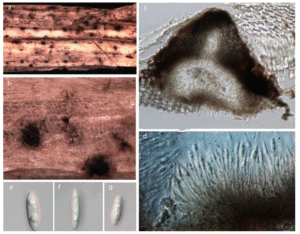
Fig. 52 Diaporthe pimpinellae (MFLU 19-0563, holotype). a Appearance of fruitbodies on host substrate. b Close-up view of fruitbodies. c Section through the fruitbody. d Peridium cell wall and immature and mature conidia attached to conidiogenous cells. e, f, g Conidia
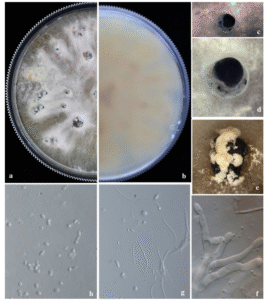
Fig. 53 Asexual morph of Diaporthe pimpinellae (MFLU 19-0563, holotype) (from culture). a Upper view of colony on PDA. b Reverse view of colony on PDA. c, d Pycnida forming on culture. e Spore mass. f Conidia attached to the coidiogenous cell. g Beta conida. h Alpha conidia
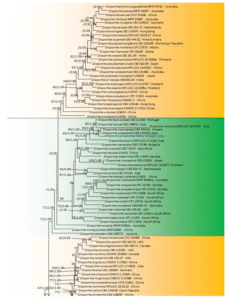
Fig. 54 Phylogenetic tree generated by maximum likelihood analysis of combined ITS, TEF1, β-TUB, CAL and HIS sequence data of Diaporthe species. Tree was rooted with Diaporthella corylina (CBS 121124). Bootstrap support values (ML) ≥ 60% and Bayesian posterior probabilities values (PP) ≥ 0.9 are shown near the nodes respectively. The newly generated sequence is indicated in blue
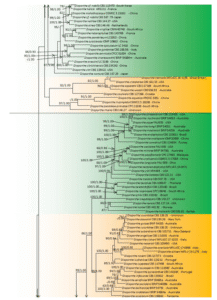
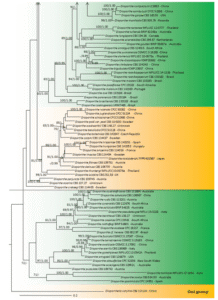
Fig. 54 (continued)
